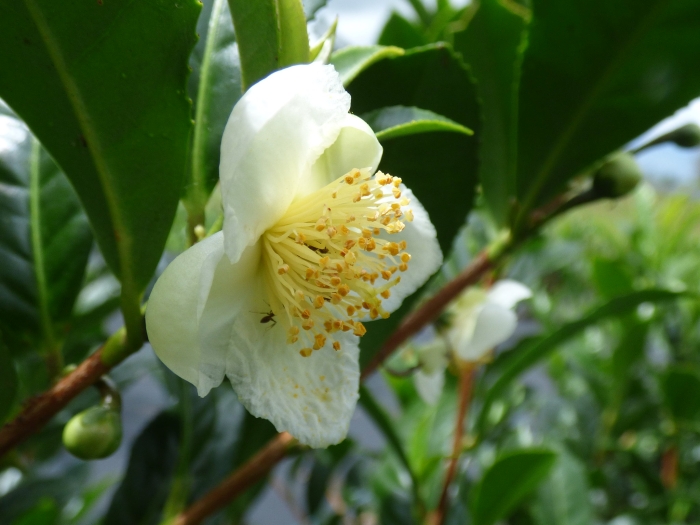Tea Plant
(Camellia sinensis)
Tea Plant (Camellia sinensis)
/
/

Forest and Kim Starr
CC BY 2.0

















































Estimated Native Range
Summary
The Tea Plant is valued for its leaves, which are processed into various types of tea. It is a popular ornamental plant due to its attractive foliage and flowers, and it is also grown for its medicinal properties. In cultivation, it requires acidic, well-drained soil and can tolerate full to part sun. Regular pruning is necessary to maintain a manageable size and to facilitate leaf harvest. While it is generally easy to maintain, it can be susceptible to pests such as scale insects and mites. Tea plants are not typically grown for their invasive potential, but they can become invasive in some regions outside their native range, so caution is advised.CC BY-SA 4.0
Plant Description
- Plant Type: Tree, Shrub
- Height: 10-15 feet
- Width: 6-10 feet
- Growth Rate: Slow
- Flower Color: White
- Flowering Season: Fall, Winter, Spring
- Leaf Retention: Evergreen
Growth Requirements
- Sun: Part Shade
- Water: Medium
- Drainage: Medium
Common Uses
Bee Garden, Bird Garden, Border Plant, Butterfly Garden, Deer Resistant, Drought Tolerant, Edible*Disclaimer: Easyscape's listed plant edibility is for informational use. Always verify the safety and proper identification of any plant before consumption., Fragrant, Hedges, Hummingbird Garden, Potted Plant, Street Planting
Natural Habitat
native to the understory of evergreen forests in East Asia, particularly China
Other Names
Common Names: Black Tea, Tea, Teabush, Teaplant, Japanese Tea, Common Tea, Tea Shrub, Tea Tree, Green Tea, Teestrauch
Scientific Names: , Camellia sinensis, Camellia sinensis var. sinensis, Camellia sinensis subsp. formosensis, Camellia formosensis, Camellia sinensis f. macrophylla, Thea lanceolata, Thea sinensis var. macrophylla, Camellia sinensis f. rosea, Thea formosensis
GBIF Accepted Name: Camellia sinensis (L.) Kuntze